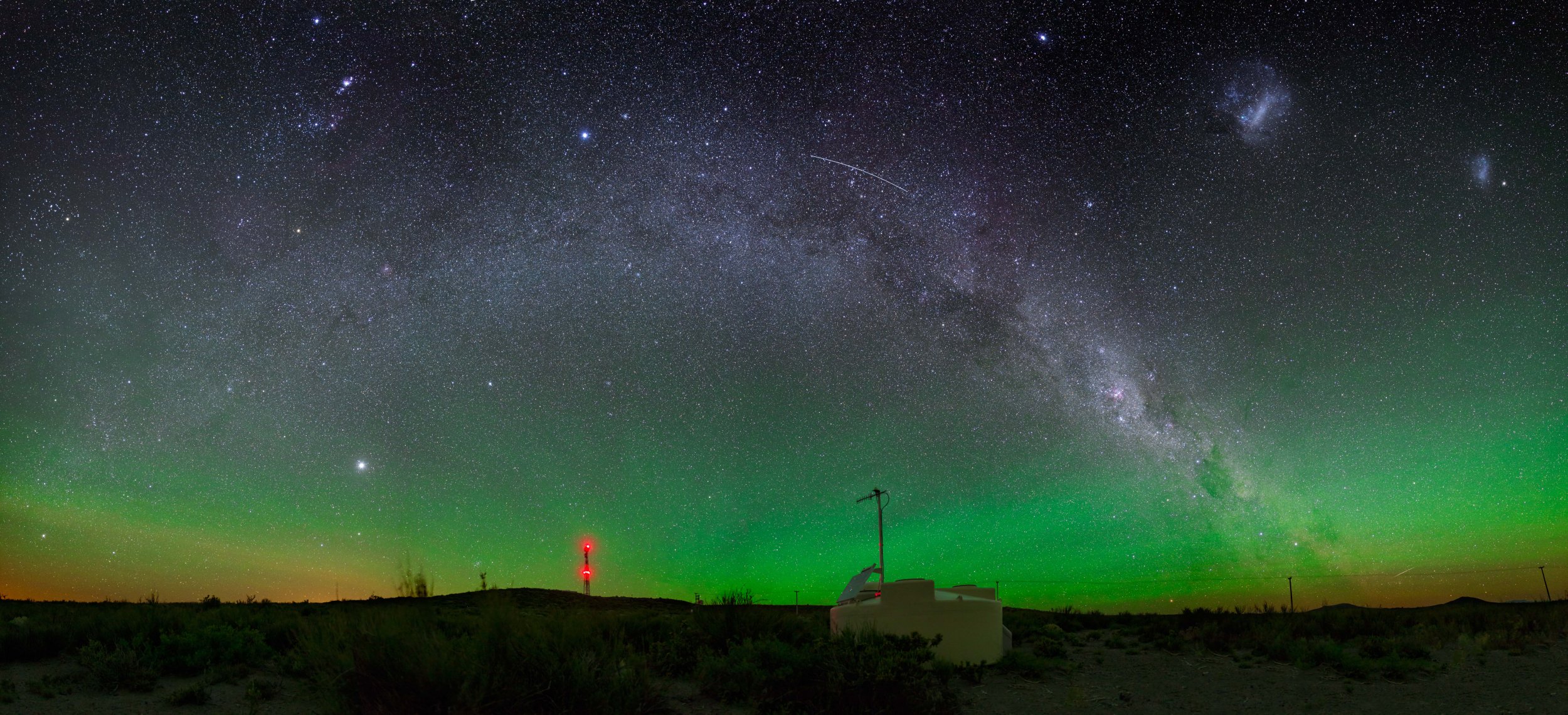
Updated | The most extreme cosmic rays originate from galaxies beyond the Milky Way, scientists have discovered, bringing them one step closer to understanding the origins of the mysterious particles that bombard Earth.
Cosmic rays—particles from outer space that travel at near the speed of light—are able to reach the highest level energy observed in nature, far beyond that of a particle accelerator. But while there are several theories about what could produce cosmic rays, their origin is still largely a mystery.
This is especially true of ultra-high energy cosmic rays, which, as the name suggests, are the most energetic of all cosmic rays. First discovered over 50 years ago, they are very rare, difficult to detect and scientists have had trouble studying them in great detail.
Over the last 12 years, scientists have been analyzing data from the Pierre Auger Observatory in Argentina, which was built in 2001 to study cosmic rays. Over 1,600 particle detectors over an area spanning 1,160 square miles collected information whenever a cosmic ray struck Earth, while telescopes would observe the light the charged particles emit.
One of the main problems with working out where cosmic rays come from is that their direction becomes distorted by Earth's magnetic field. This means scientists have not even been able to work out if they originate from within the Milky Way or not—let alone pinpoint their source.
Between 2004 and 2016, thousands of ultra-high energy cosmic rays were detected at the site. By capturing them, researchers were able to work out the direction in space they came from—and model the effects of Earth's magnetic field in tracing the ray back. Their findings, published in Science, show the cosmic rays appear to be coming from a certain direction in the sky, rather than being evenly distributed.
The alignment indicates that the cosmic rays originate from galaxies beyond the Milky Way and the general direction points towards a region where galaxies are densely populated.
Carole Mundell, head of physics at the University of Bath, U.K, who was not involved in the study, commented on the findings. "The origin of ultra high energy cosmic rays is a major question on modern astrophysics," she tells Newsweek. "The debate currently centers around whether they come from phenomena inside our own Milky Way galaxy or from more distant cosmological sources.
"It is an intriguing paper and no doubt other astronomers will be looking for extragalactic sources in the direction suggested by the authors in the hope of finding candidates from where these cosmic rays may have originated."
Understanding extragalactic cosmic rays will help scientists better understand fundamental questions about the universe, such as the composition of galaxies and how particles are accelerated to the energies we see. "We are now considerably closer to solving the mystery of where and how these extraordinary particles are created, a question of great interest to astrophysicists," Karl-Heinz Kampert, from the University of Wuppertal in Germany and spokesperson for the project, said in a statement.
Writing for the Conversation, Bruce Dawson, from the University of Adelaide, said candidates for the source include supermassive black holes and colliding galaxies. The Auger observatory is currently undergoing an upgrade, due to be completed in 2018. When it's finished, scientists will be able to select the most energetic cosmic rays to study in even greater detail. "Then we will have a real chance of identifying which galaxies, or class of galaxy, are responsible for producing the most energetic particles known in the universe," he said.
This story has been updated to include quotes from Bruce Dawson.
Uncommon Knowledge
Newsweek is committed to challenging conventional wisdom and finding connections in the search for common ground.
Newsweek is committed to challenging conventional wisdom and finding connections in the search for common ground.
About the writer
Hannah Osborne is Nesweek's Science Editor, based in London, UK. Hannah joined Newsweek in 2017 from IBTimes UK. She is ... Read more
To read how Newsweek uses AI as a newsroom tool, Click here.








